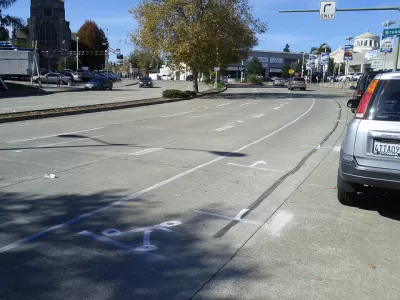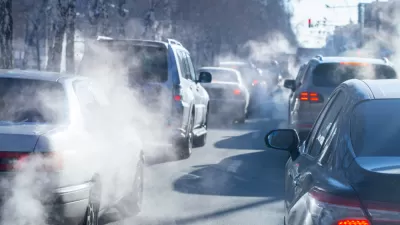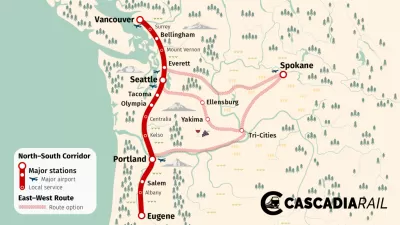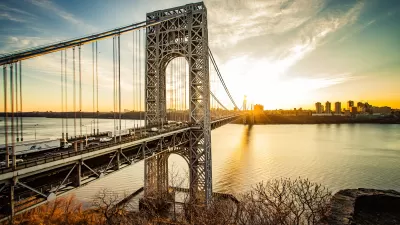Following a "Mayors Challenge" for bike safety by Transportation Secretary Anthony Foxx earlier this year, the U.S. Department of Transportation recently released a "Road Diets" report, providing a geographical diverse collection of case studies.

Josh Feit reports on the contents of a report by the U.S. Department of Transportation that presents case studies of road diets from around the country. Feit focuses on the three Seattle road diets (Feit prefers the term road safety design because "the process actually redesigns roads to carry more people not less thanks to typical changes such as adding bike lanes, sidewalks, bus hubs, and pedestrian islands"), which all received high marks from the U.S. DOT.
"Taking a close look at the Dexter 'right size,' the Nickerson safety redesign, and the Stone Way upgrade, U.S. DOT cheered SDOT’s success at using smart traffic math—going from four car lanes to two, adding buffered bike lanes and floating bus stops, and adding crosswalks, curb bulb outs, and pedestrian islands—to make roads more efficient and multimodal," writes Feit.
As for the remainder of the case studies in the "Road Diet" report [pdf], 24 are presented in total in the following locations as diverse as Genesee County in Michigan to Reston in Virginia to Santa Monica in California. More resources from the federal government regarding road safety design includes the Federal Highway Administration's Road Diets website.
FULL STORY: Ethics Commission DISLIKES Murray’s Response to Sawant; the Feds LOVE SDOT

Planetizen Federal Action Tracker
A weekly monitor of how Trump’s orders and actions are impacting planners and planning in America.

Maui's Vacation Rental Debate Turns Ugly
Verbal attacks, misinformation campaigns and fistfights plague a high-stakes debate to convert thousands of vacation rentals into long-term housing.

San Francisco Suspends Traffic Calming Amidst Record Deaths
Citing “a challenging fiscal landscape,” the city will cease the program on the heels of 42 traffic deaths, including 24 pedestrians.

Defunct Pittsburgh Power Plant to Become Residential Tower
A decommissioned steam heat plant will be redeveloped into almost 100 affordable housing units.

Trump Prompts Restructuring of Transportation Research Board in “Unprecedented Overreach”
The TRB has eliminated more than half of its committees including those focused on climate, equity, and cities.

Amtrak Rolls Out New Orleans to Alabama “Mardi Gras” Train
The new service will operate morning and evening departures between Mobile and New Orleans.
Urban Design for Planners 1: Software Tools
This six-course series explores essential urban design concepts using open source software and equips planners with the tools they need to participate fully in the urban design process.
Planning for Universal Design
Learn the tools for implementing Universal Design in planning regulations.
Heyer Gruel & Associates PA
JM Goldson LLC
Custer County Colorado
City of Camden Redevelopment Agency
City of Astoria
Transportation Research & Education Center (TREC) at Portland State University
Jefferson Parish Government
Camden Redevelopment Agency
City of Claremont





























